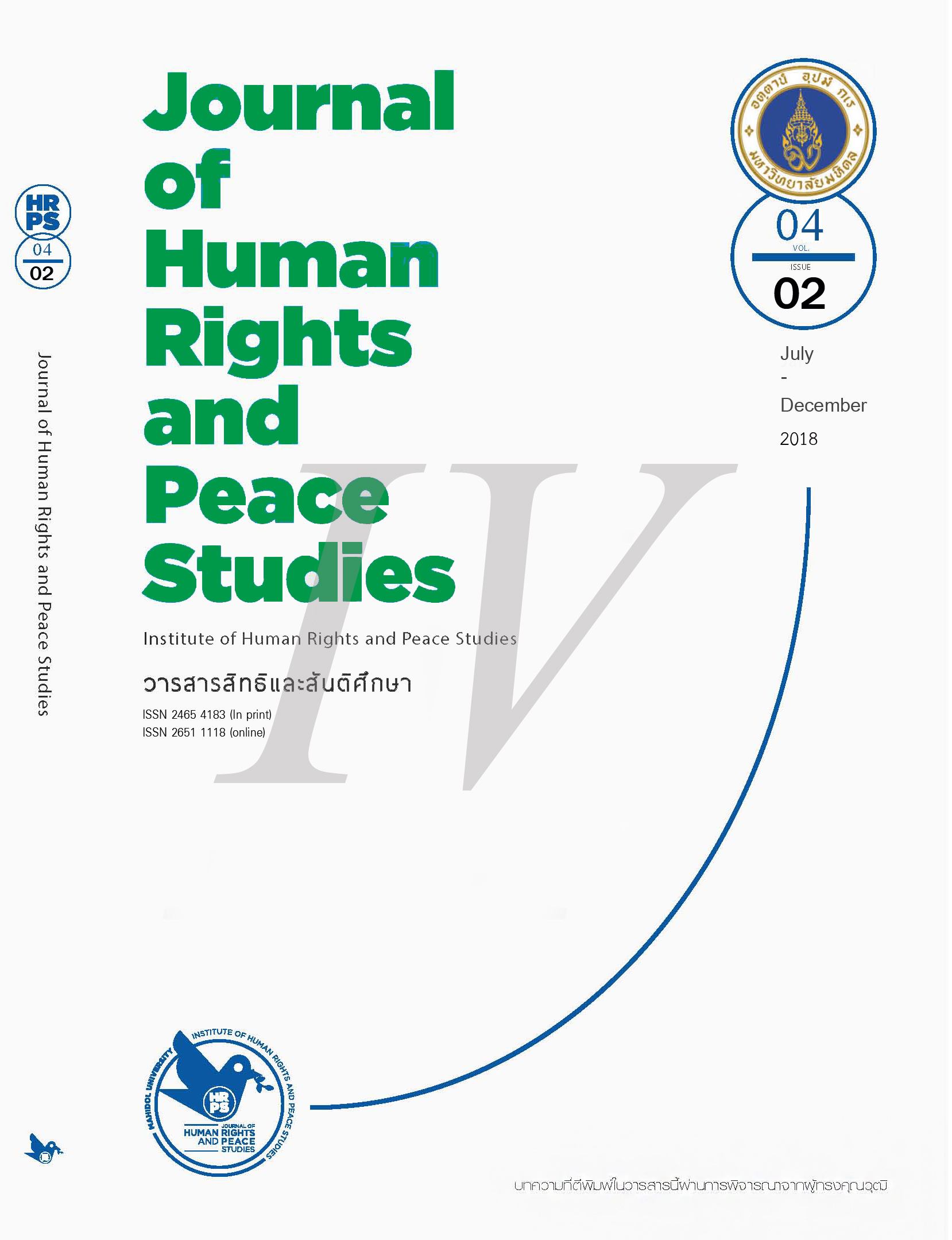Improving Sexual and Reproductive Health and Rights in Cambodia and Myanmar: The Roles of Community Engagement Policy and Implementation
Main Article Content
Abstract
Community engagement has been advocated as a policy tool to empower community in health planning and provision of public health services. Yet literature about implementation and its impact is limited. This research attempts to examine the role of community engagement in improving awareness and access to sexual and reproductive health and rights in Cambodia and Myanmar. This study is qualitative based on literature review and primary qualitative data from key informant interviews and focus group discussions. Twenty seven key informant interviews and 17 focus group discussions were conducted in two health districts in Cambodia and two townships in Myanmar. Cambodia has long implemented community engagement policy and community mechanisms had been established nationwide. In contrast, Myanmar has no policy on community engagement. Information from interviews with health authorities indicates that in both countries, the implementation varied by health district and existence of community health interventions. Community mechanisms were important in improving information exchange, mobilizing populace support of public health services and health schemes and serving as community health resources in health education and referral. In Cambodia impact of community mechanisms on sexual reproductive health and rights (SRHR) was more pronounced, less so in Myanmar. Community mechanisms have made valuable contributions to improving SRHR. Myanmar needs a policy on community engagement. Impact of community mechanisms could be enhanced with strong implementation and support.
Article Details
The views, opinions, and pictures expressed in this journal are those of the authors and do not necessarily reflect the opinions and viewpoints of the editor and the editorial board. All rights are reserved by the authors and the Institute of Human Rights and Peace Studies of Mahidol University. No part of this journal may be reproduced, stored in a retrieval system, or transmitted in any form or by any means without the prior permission in writing from the journal’s editor, or as expressly permitted by law, or under terms agreed with the appropriate reprographics rights organization. Non-commercial use of information in this journal must be properly referenced.


